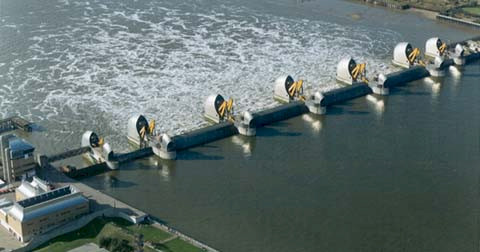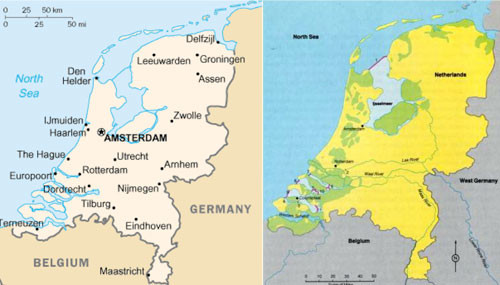Brisbane 2011: Living with Floods and Dancing with Dugongs: Part 8- Examples of Flooding in Europe
Bill Dennison ·I will use three examples of flooding from Europe. The first two are up in the North Sea: London and Holland, and finally the famous case of Venice, which is sinking fast. In 1953 there was a devastating storm surge in the North Sea. The storm surge was two and a half meters on the Netherlands' coast, two and a half meters on southern England, and dwindled away from there. There was a series of northwest winds and spring tides, which resulted in twenty-five hundred people dying in Holland, and three hundred people in England, and many ships were lost. Note, that isn't the total death count; there were a lot of others. So it had a big impact and clearly people responded. London had long experienced storm surges, noted by the famous diarist Samuel Pepys, who wrote about the Black Death and the Great Fire of London. He also wrote about flooding. In 1663 he wrote, "There was last night the greatest tide that was ever remembered in England to have been in this River all Whitehall having been drowned". London had a series of surges, so they responded after the big '53 event. Of course it took them until 1982 to actually complete it, but they put a big set of storm surge gates, (the second biggest in the world) for the River Thames, downstream of London, to prevent the storm surges from coming in.

The Dutch also have been responding to sea-level (of course they're great engineers). If you see this current map of Holland, compared to the historical map, you see that huge areas are areas of re-claimed land, which is short for being below sea-level. There are so many places that you can go, driving in a car or on a train, and you can see a ship sailing above you, and a stream down below you. It is just mind boggling, they have so much water at different levels. They have massive dikes, in the south. They are being built and added to, because since '53 there has been impressionable sea-level rise. So they have been adding to those dikes to account for that rise with huge engineering works.

Port Rotterdam has the largest tide storm surge gates in the world that come in [towards the middle] to close off the water coming in. Of course, they also have the danger New Orleans does of flooding coming from the rivers, so they are very vulnerable from the storm surge, as well as riverine flooding.
Venice is probably the best known case study for sea-level rise. Venice is located in the top of the Adriatic Sea. I think that is an important part, because that is where the funneling of the Adriatic takes place with the northwest winds. It sits not on the barrier island, and not on the mainland, but on an island behind the barrier islands. This island, or series of islands have been built up, and had wooden stumps pounded down and buildings constructed on them. Mark Pascoe and I spent some time there, a couple years ago, during one of those events. We were walking around and we found out that they sell not just gum boots at the local stores, but they sell hip boots, that you can put on and walk, because that is the height of the water. You can be caught in one of these events where you’re not just knee deep, but thigh deep in the water. This is Saint Mark's Square under water, and this type of flooding is a regular event.

This blog post was created from a presentation by Bill Dennison, delivered at the historic Customs House in Brisbane, Australia on 8 July, 2011 (full powerpoint presentation can be accessed on IAN Press.
About the author
Bill Dennison

Dr. Bill Dennison is a Professor of Marine Science and Vice President for Science Application at the University of Maryland Center for Environmental Science.

